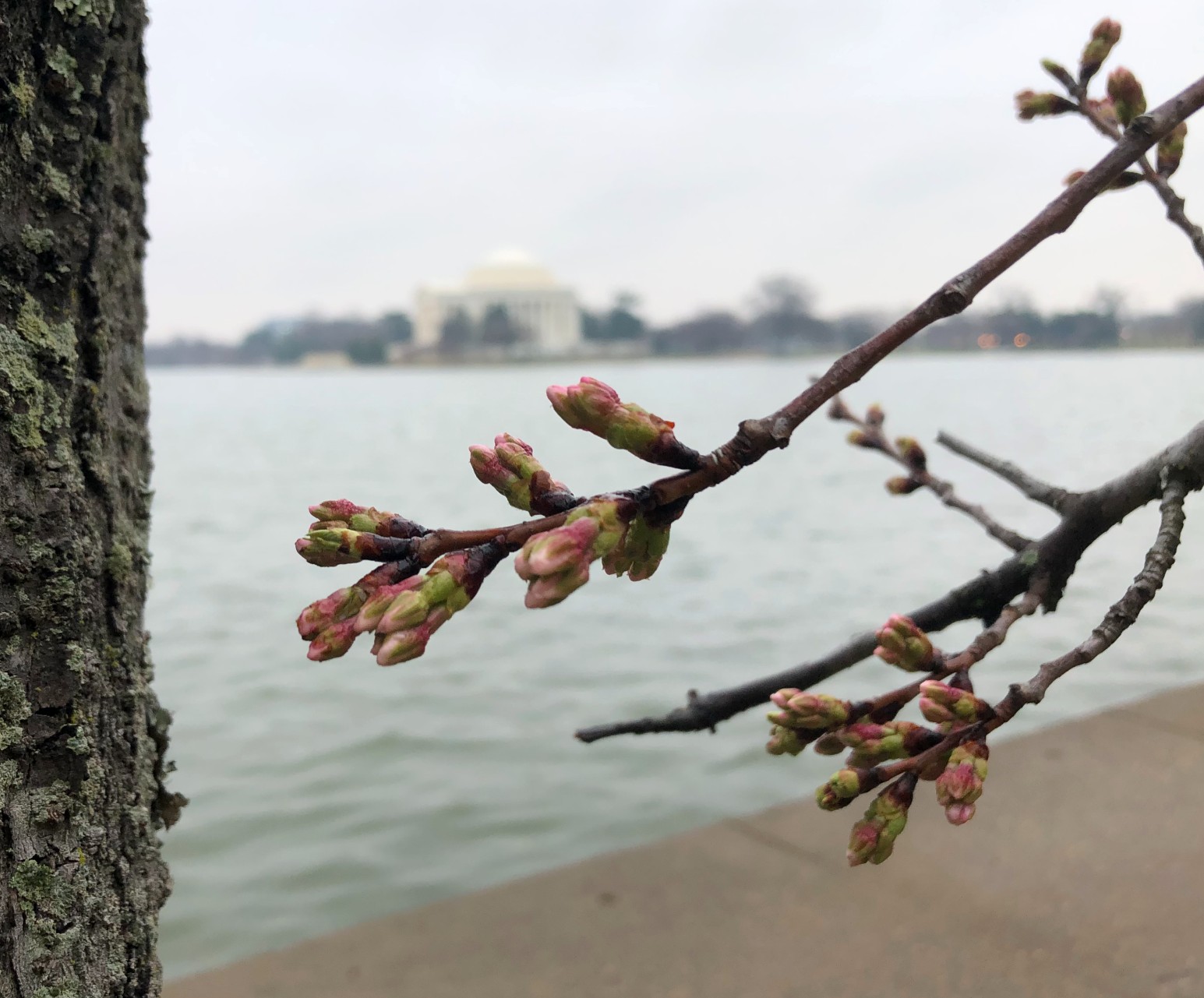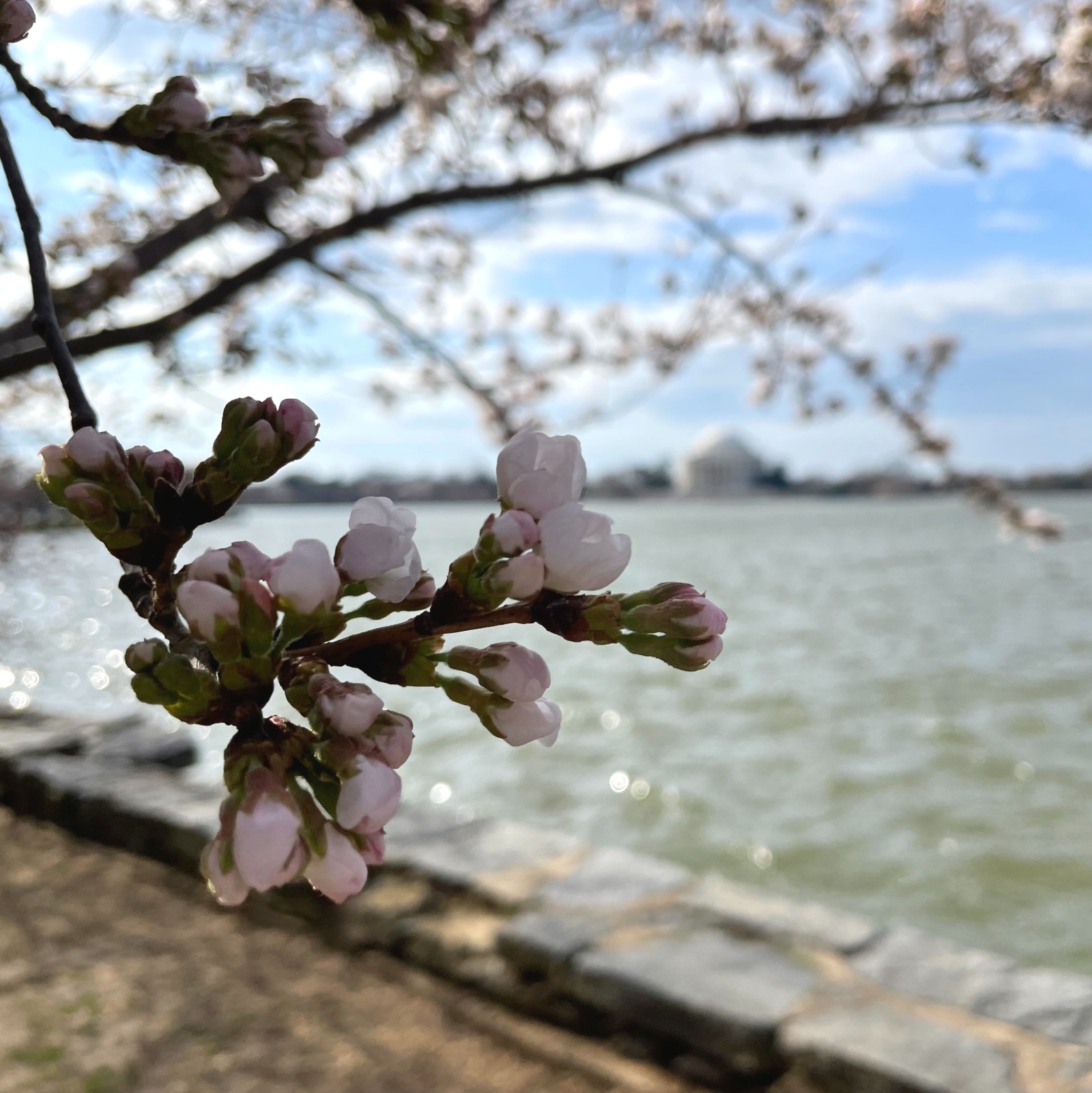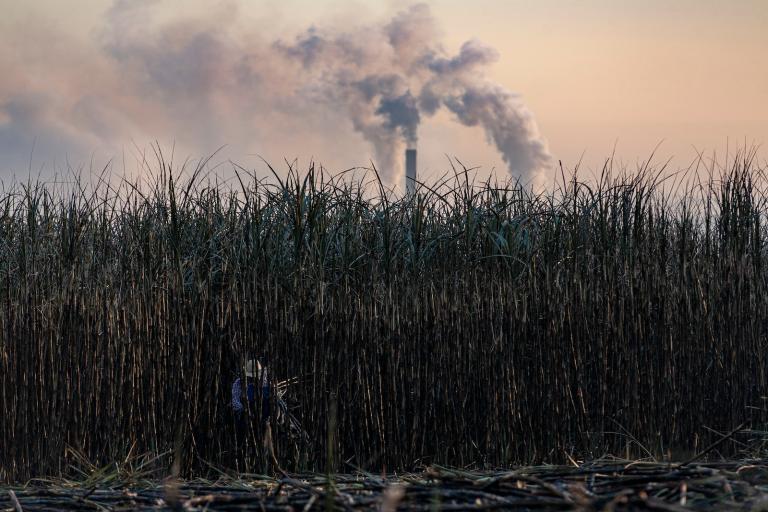It’s the most wonderful time of the year in Washington D.C.: cherry blossom time. Even before spring’s official arrival on Sunday, the capitol’s cherry trees had budded, peduncles — the blossom-bearing stalks — were stretched out, and blossoms puffed. On Monday afternoon, the National Park Service announced peak bloom had arrived in a stream of giddy capital letters: “PEAK BLOOM! PEAK BLOOM! PEAK BLOOM!” A frothy, pink-and-white cloud unfurled around the sparkling waters of the Tidal Basin.
To many locals, the blossoms are an unequivocal time of celebration, an opportunity to behold something precious and fleeting. Washingtonians share their favorite petal-peeping spots and swap tips for avoiding the crowds. Couples plan engagement shoots and proposals. Residents decorate their porches, plan parties, and make pilgrimages to the National Mall.
The last two pandemic years forced the city to heavily scale back its annual National Cherry Blossom Festival; people were invited to tune into a livestream rather than pack themselves like sardines beneath the canopy of petals. Now, some city leaders are framing this year’s celebration as D.C.’s “pandemic comeback,” welcoming visitors back to the Tidal Basin with open arms. “Let me say, without equivocation, that D.C. is open!” said Mayor Muriel Bowser at a press event earlier this month. “We want D.C. to be the face of spring for the nation.”
But those springs are warming, prompting the city’s cherry trees to bloom earlier and earlier. Since 1921, the National Park Service has tracked peak bloom dates. This year, it was forecast for March 22-25, about a week earlier than the 30-year average. In a warming world, the blossoms are a climate reality check as much as a harbinger of spring.
You can chalk this year’s early bloom up to mild weather in February and March. In the days leading up to peak bloom — which in D.C., means 70 percent of the trees have blossomed — the city enjoyed pleasant temperatures in the 70s, which coaxed cherry trees from their winter dormancy. Warming temperatures mean unfurling leaves and blooming flowers appear earlier, according to the EPA.
The cherry trees also need a month of cold weather below 41 degrees Fahrenheit to blossom properly. That requirement, known as chilling hours, is a tree’s way of making sure winter is really over — and the pollinating bugs are buzzing — before it flowers. In the long term, peak bloom may actually change course and occur later, since warming winters would impair the trees’ ability to wake up. These shifts represent the ways climate change upends ecosystems, interfering with plants that flower, insects that pollinate plants, critters that feed on insects, and on up the food chain.
To be clear, the fact that D.C.’s cherry trees are sensitive to a warming climate is hardly new. Still, some experts say they’re not an ideal indicator of climate change. The last century of data is noisy, meaning the dates vary a great deal year to year, said Dagomar Degroot, an environmental historian at Georgetown University. “There’s not a very clear trend line at all,” he said. “As of right now. That might change in the future.”
From left to right, cherry blossoms at the fourth (peduncle elongation) and fifth (puffy white) stages of bloom. Photos by National Mall and Memorial Parks, National Park Service.
More reliable are the trees in Kyoto, across the Pacific, where more than 1,200 years of data — spanning records from emperors, aristocrats, and monks — clearly shows peak bloom advances in response to climate change. Last year, Kyoto’s cherry blossoms peaked on March 26, the earliest date yet in the entire record.
According to Soo-Hyung Kim, a plant scientist at the University of Washington, although the D.C. data varies more than Kyoto’s, “they are saying the same thing.” A decade ago, Kim led a study predicting how climate change would affect the timing of D.C.’s peak blooms. His team predicted that by 2050, peak bloom would arrive an average of five days early at least.
Recently, Kim was curious how their predictions fared. He revisited their estimates for 2020 and found they were right on track with last year’s peak bloom — a win for their model, but not so much for the planet. That was sobering, Kim said, because their predictions were based on two scenarios offered by the leading climate report at the time: one in which the world’s energy use was balanced between fossil fuels and renewable sources, and the other, dominated by fossil fuels. 2021 looked a lot like the model’s prediction for the latter, a more pessimistic view of the future.
If D.C. diversified its cherry trees, the city could better manage the blossoms’ early arrivals and delays, said Naoko Abe, author of The Sakura Obsession. Most of D.C.’s trees are Yoshinos, a ubiquitous and easy-to-grow variety, which is why they bloom into a puffy, pink cloud all at once. But there are hundreds of varieties. Embracing diversity would make for a more climate- and disease-resilient population. ”If you have different varieties, they blossom at different times and they are different colors and they fall at different times,” she said, describing mountain groves in Japan where many species grow wild together. “It gives you a totally different impression.”
All of this suggests D.C. may need to adjust its picture-perfect image of peak bloom. For Degroot, whose walk to work has lately been colored by flowering trees and the perfume of spring, the cherry blossoms represent risk and uncertainty — and what the city stands to lose without dramatic action to curb emissions. “What we’re grappling with is a much more uncertain future where the cherry blossom season really is impaired,” he said. “We risk losing so much.”





